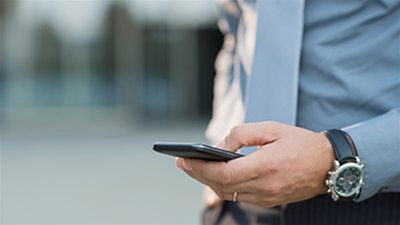 ≡
≡
Mobile Sales Funnel Insights
Jan 17, 2017 by Mark Maier Do standard statistics of the Buyers Awareness Cycle apply to mobile transactions? At LPG we note that the average sales cycle for something like a new home is over 20 months but new information from MediaPost says that mobile changes the final stage...
Do standard statistics of the Buyers Awareness Cycle apply to mobile transactions? At LPG we note that the average sales cycle for something like a new home is over 20 months but new information from MediaPost says that mobile changes the final stage..."Once a consumer starts researching products on their smartphone, the actual purchase of a product is pretty close behind.
In the U.S., the final purchase is most likely to occur in a physical store, which is not the case in some other countries.
While different countries have varying degrees of penetration, the smartphone is considered the most important device for retail research by almost a third (30%) of all retail shoppers, according to a new report.
The Global Mobile Path to Purchase study was conducted by xAD and Millward Brown and examined shopping behaviors in five countries (U.S., U.K., Germany, China and Japan).
The importance of the smartphone as a research tool for retail purchase varies by country, with the device taking on more importance than desktops in China. Here’s the breakdown of where mobile is the most important device for shopping:
- 50% -- China
- 44% -- Japan
- 32% -- United Kingdom
- 31% -- United States
- 29% -- Germany
There are a wide range of items that people are shopping for on phones. Consumers in Japan and China use phones for grocery shopping way ahead of other countries. In China, 88% of consumers use phones for grocery shopping, and 63% of consumers in Japan.
By contrast, just over half (57%) of U.S. consumers use their phones for grocery shopping, with clothing and apparel talking the top spot. Here’s what consumers in the U.S. use their phones for when shopping:
- 58% -- Clothing and apparel
- 57% -- Grocery
- 41% -- Electronics
- 39% -- Home goods and improvement
- 37% -- Beauty and wellness
- 31% -- Games and entertainment
- 23% -- Sports and leisure
While more consumers in Japan make purchases on their phones, U.S. shoppers head to the store for that final purchase. For example, 67% of consumers in the U.S. make a trip to the store to complement their mobile research compared to fewer than half (45%) in Japan.
The real key in all of this is that once consumers start researching on their phones they are in the market to make a purchase relatively soon. Mobile research is the beginning of the intent to purchase cycle.
Chinese and U.S. consumers are the quickest to convert, while Japanese consumers tend to take a bit more time. When shoppers start their mobile researching, here’s the breakdown of how many make a purchase within the day or sooner:
- 86% -- China
- 78% -- United States
- 78% -- United Kingdom
- 73% -- Germany
- 49% -- Japan
After they begin their mobile research, more than half (54%) of U.S. consumers end up making the purchase in a physical store. In China and the U.K., more consumers make their final purchase via mobile rather than in person or via desktop.
This may be a factor in the adoption of mobile payments, at least in stores.
In the U.S., in-store mobile payments account for only 2% of all retail transactions, according to new research form GfK. In China, it accounts for 24% of transactions.
Shoppers in the U.S. may pass on mobile payments and prefer to make most of their purchases in a physical store, but that does not leave mobile out of the process.
Smartphones are used all the way to the final purchase, for comparing products and checking prices of competitors. The consumer may end up buying at the store, but they likely used their smartphone to determine the product, the store and the timing of the buy."
Related Categories



